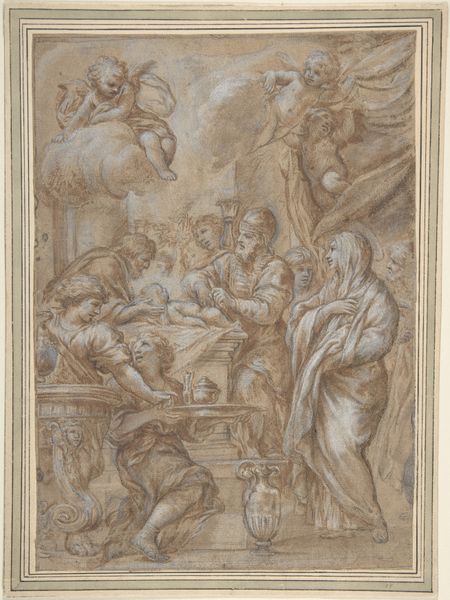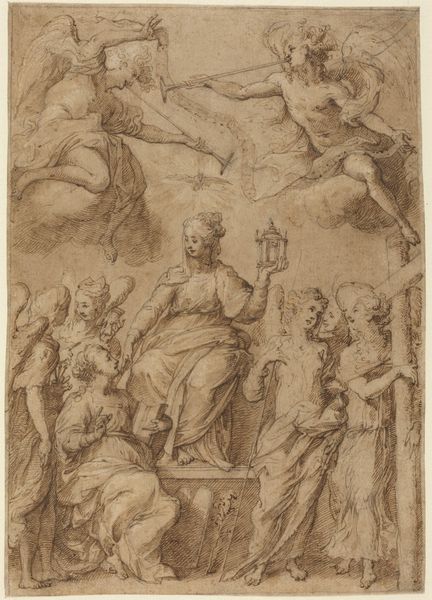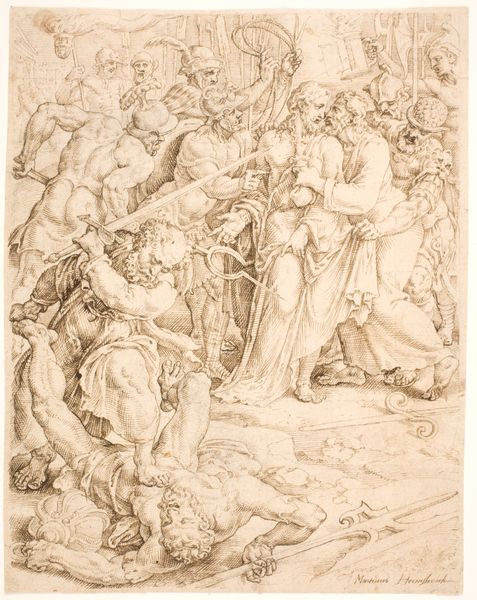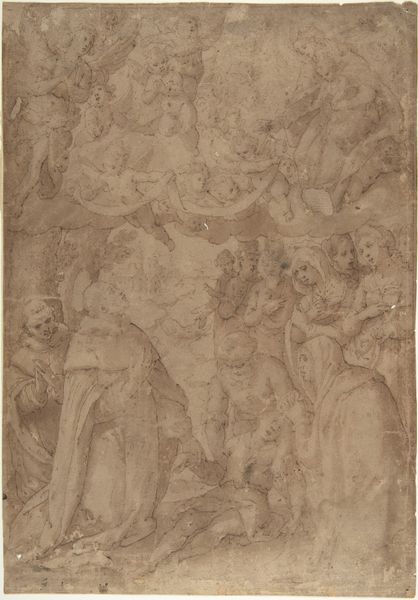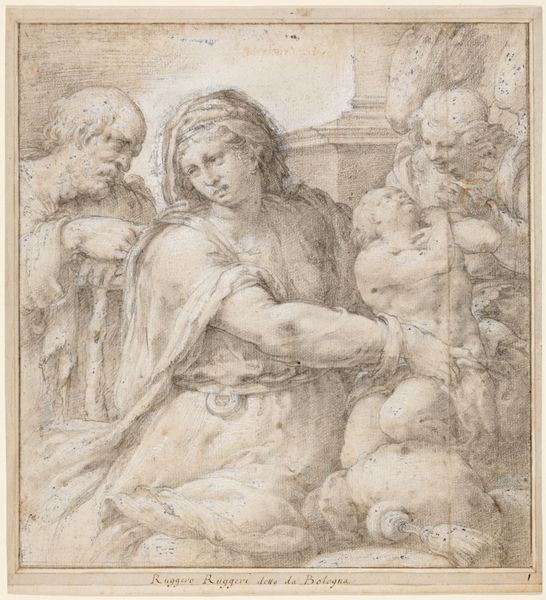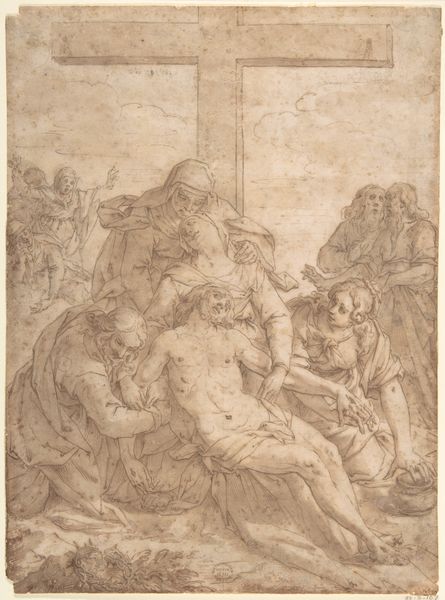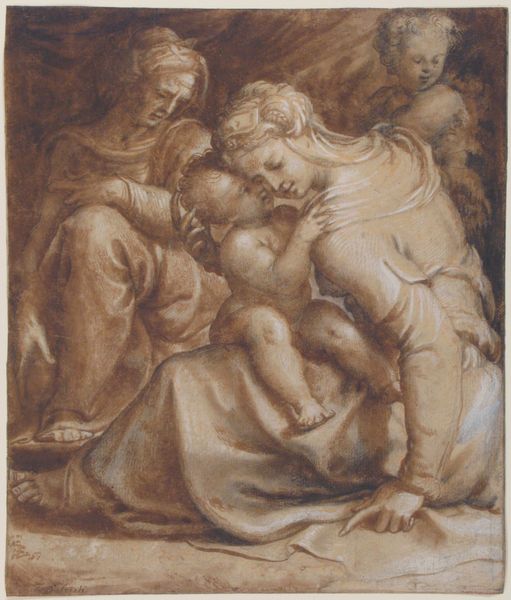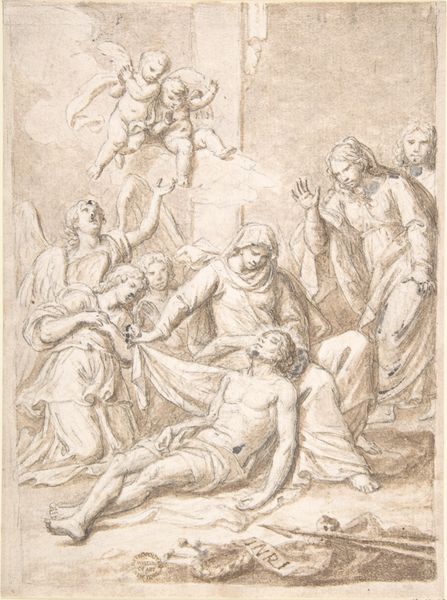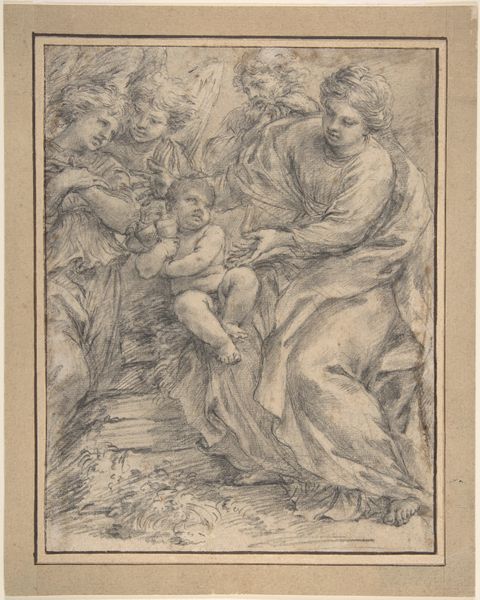
The Holy Family with the Infant Baptist, Saint Elizabeth, and an Attendant Angel 1550 - 1560
0:00
0:00
drawing, print, ink, pen
#
portrait
#
drawing
# print
#
charcoal drawing
#
figuration
#
ink
#
pen
#
history-painting
#
italian-renaissance
#
angel
Dimensions: 6 1/4 x 5in. (15.9 x 12.7cm)
Copyright: Public Domain
Editor: This is Aurelio Luini's "The Holy Family with the Infant Baptist, Saint Elizabeth, and an Attendant Angel," created between 1550 and 1560, using pen, ink, and charcoal. I find the sketch-like quality so intriguing, giving it an intimate feel. What do you make of this piece, particularly its historical context? Curator: Well, its creation falls squarely within the Italian Renaissance, a period where the Church profoundly influenced artistic production. Works like these weren't just personal expressions, but served didactic functions, reinforcing religious doctrine and social order. Considering that, what strikes you about the composition? Editor: The figures are grouped quite closely, creating a sense of warmth. Yet, the expressions are somewhat ambiguous...almost stoic. Curator: Exactly. That tension is crucial. It hints at the complexities beneath the surface of idealized religious narratives. Remember that the Renaissance, while celebrating humanism, was also navigating political and religious tensions. How do you think a drawing like this, with its intended public role, addressed those issues? Editor: Maybe it was a way to present a vision of idealized harmony, while subtly acknowledging the struggles of the time? Did the art-buying public generally expect this, during this period? Curator: Absolutely! Patronage dictated much of the subject matter. Religious institutions commissioned pieces to promote specific interpretations of faith. This drawing probably functioned as a study for a larger painting or print. Luini navigated this system, but there’s also a freedom in the sketchiness that lets some personal touch come through. Editor: That makes me think differently about the role of the artist and the buyer. Seeing it as part of that historical power dynamic adds another layer. Curator: Precisely. Understanding art's role within socio-political structures enriches our perception. We aren't simply looking at a beautiful drawing; we’re engaging with a visual document that reflects its historical moment. Editor: I hadn't considered that. It’s much more layered than just religious iconography. Thanks for pointing out the nuances of its cultural backdrop. Curator: My pleasure!
Comments
No comments
Be the first to comment and join the conversation on the ultimate creative platform.

